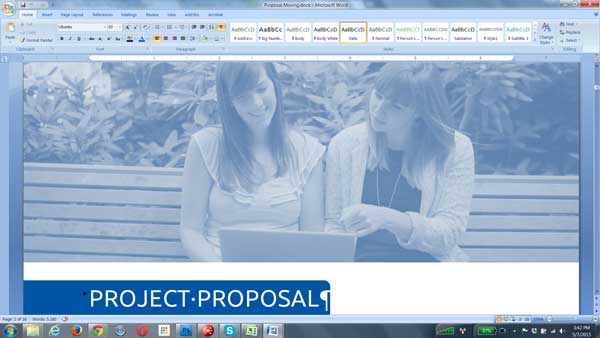 Lately I’ve had quite a few conversations with fellow web developers looking for guidance on how to win an RFP. We’ve been blessed recently with quite a few successes and I’d like to share a little secret with you, the same secret I’ve shared with them. Winning RFPs simply comes from listening. Understanding your clients needs and demonstrating you can meet them quantitatively.
Lately I’ve had quite a few conversations with fellow web developers looking for guidance on how to win an RFP. We’ve been blessed recently with quite a few successes and I’d like to share a little secret with you, the same secret I’ve shared with them. Winning RFPs simply comes from listening. Understanding your clients needs and demonstrating you can meet them quantitatively.
You don’t win RFPs by betting on qualitative information, hoping for uneducated customers or relying on slick salesmen. You don’t win RFPs by having been in business longer than your competitor, by having more sites or by having a huge staff. You win RFPs by demonstrating good work, by matching the right staff to the project, and by showing the client your capability to exceed their expectations.
We’ve all felt insecurities but they are just that, insecurities. Remember these two things; 1) RFPs are part of a vetting process designed to separate wheat from the chaff and 2) RFPs are often written by committee so simple, clear objectives are hard to come by. This is where the saying, “Fail quickly” comes to mind. It’s OK to be the chaff, but find out quickly by identifying objectives, understanding why the objectives exist, and proving whether you meet the need. Base your decision on facts, not insecurities.
Achieving 100% compliance and traceability shows that you understand the project from the clients point of view
As to whether you’re wheat or chaff for the project you’re looking at right now, find out fast by bringing a Requirements Traceability Matrix, RTM, into your bidding workflow. In programming, this can be an extensive project in itself, but here we are using simplified chart to prove, through small Test Cases, whether you can fulfill each requirement. It’s an easy way to see how requirements relate to services. When you’re done, you’ll know whether to bid with confidence or no-bid.
How do you set up a Requirements and Test Cases for a Traceability Matrix?
Set up a graph and create three columns titled Requirement, RFQ Location and Response Location. list what the client wants, their Requirements, vertically under the first column. Now show the relationship to the RFP by filling in the second column where the request is located. Your ability to fulfill a need is the result of a Test Case, often referred to as a Test Oracle. If you move forward, you’ll have to write out the proposal. What better way to start than with all of the Test Cases and their related Test Oracles in a concise outline.
Proving your capabilities in outline format in a separate document and listing the numbers from your outline in the third column of your chart provides an easy to follow index for your team and for your client. As a side note, you’ll often find that your clients will refer back to the RTM you’ve created as the basis for determining project completion. That in itself is a key differentiator.
What does an RTM look like for ?
The list of requirements can become extensive, but let’s look at what a few examples would look like in chart format:
| Requirements Traceability Matrix | ||
| Requirement | RFQ Location | Response Location |
| Name, Title, Address of three references | Section 3 | I |
| Ability to complete the project within the allotted timeline | Section 4 | II |
| Development of 3 Custom Post Types | Section 5 | III |
——————————————————————————————————
The corresponding Response Location’s outline would look like this:
I. Name, title and address of three references:
A. Name, Title and address of reference 1
B. Name, Title and address of reference 2
C. Name, Title and address of reference 3
II. Ability to complete the project within the allotted timeline:
A. Schedule clear for dates specified in RFQ Section 4. Ability to complete reviewed by KM and JW.
B. Real Big Marketing is able to begin the project upon issue of purchase order per client request and will be completely implemented no later than August XX, XXXX(NOTE: Per client instruction this excludes Section 12 – Content Migration).
III. Development of 3 Custom Post Types and 3 corresponding templates:
A. Per RFP Section 5, client requires three CPTs; 1) Testimonials, 2) Coupons, 3)Staff. Reviewed by SB, KM, JW. No technical barriers. Add .5 hours to meet design spec.
——————————————————————————————————
It’s a simple solution to remove the insecurities and make the bid/no-bid decision. Wheat or chaff, you’re streamlining your RFP response process. When you decide to bid, you’ll find that you’re tightly aligned to the client. You can quickly demonstrate, point-by-point, that you’ll meet and exceed their expectations. No slick salesman required, just build out the outline. You’re more qualified than you think.
Ready to drive targeted visitors to your Realbigmarketing Com site? This quick video explains how our AI works: https://youtu.be/UEooLHpFYW0